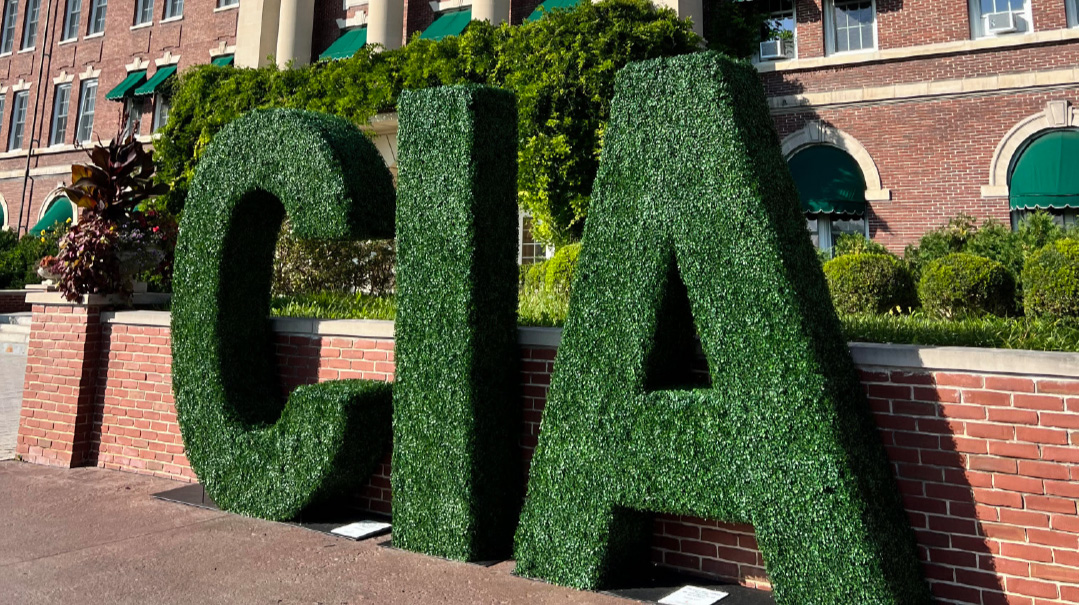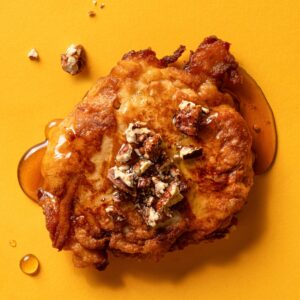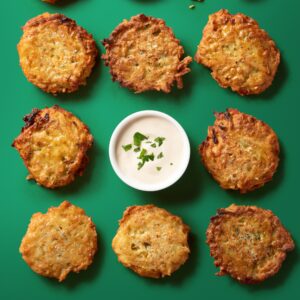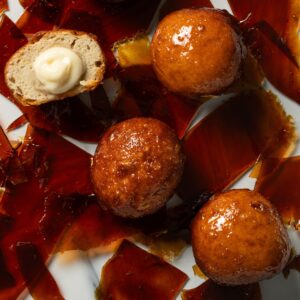Culinary School and Beyond
| February 20, 2024
After high school, I took a job at Le Petite Gourmet Catering and French Pastry Shop, Denver’s largest caterer and French bakery.
Catering companies are run very differently from the way restaurants are. There were many different entities in this business. In the first couple of weeks, I learned about the kitchen brigade, a system of staffing a kitchen so that each worker is assigned a set of specific tasks. These tasks are often related by cooking methods, equipment, or the types of foods being produced. It’s a hierarchy, with the different titles being executive chef, chefs de cuisine, sous chef, chef de partie, commis chef, and dishwasher. Everyone in the kitchen had to answer the chefs with the words, “Yes, Chef!”
The bakery was run by several French pastry chefs. They started work at midnight and kept mostly to themselves. I worked with the ladies in the cold appetizer kitchen, where we prepped all of the thousands of hand-rolled mini hors d’oeuvres. I worked alongside a woman named Hilda who had numbers on her arm. It was the first time I had ever met a Holocaust survivor.
The executive chef of La Petite, Chef Chris Knudsen, was a graduate of the Culinary Institute of America (known as the CIA). He warned me that if I didn’t take the job seriously, I would fail. There was very little room for slacking off. After a little while, I applied to the CIA and was accepted with a letter of recommendation from Chef Chris.
Off to New York
The CIA building sits boldly on the Hudson River in Hyde Park, New York. I was overcome with awe the first time I saw it, and I still feel the same way today. Most of the students dressed formally in houndstooth pants, white chef coats, yellow neckerchiefs, and black shoes, with black and white the dress of choice for students who worked in the specialty restaurants open to the public.
When I attended from 1984–1986, the CIA was a 21-month program with many different tracks. Classes started with the basics like knife skills, stocks and sauces, and butchering. The more advanced classes included international cuisine, pastry prep, fish cookery, beverages, and business classes.
To support myself while attending school, I worked in the school’s bakery on the weekends, where I oversaw baking the croissants. I’d experiment with chocolate, different jams, and various cheeses. That didn’t help my waistline too much! I also worked in the school pub, where I learned that the quality of the service is just as important as the quality of the food served. Food and service work hand in hand in the making of a quality establishment.
After two semesters in school, I had to find a job as an extern for three months. I was hired by a few restaurants in Denver, one of which served classical French food and another which was an Italian bistro that served salads, pasta, and wood-fired pizzas. The Italian bistro was where I learned the art of making pizza and cooking with wood. As in all cooking, timing is the key ingredient. Food-concept-wise, this was fun, fast, and invigorating.
Making pizza is a true art form that I was completely addicted to. From the feel of the dough ball to the creation of a disc/pizza skin and then to achieving perfect edge and crust, each step required skill. I had to twirl and position each pizza around the hot embers and logs, often burning myself to get the optimal color and crispness. Many times it would rip or come out too thin, and then I had to start over.
Sous Chef? No, Sir
School flew by, and before I knew it, I was graduating at the top of my class. The time I spent at the CIA is one of the highlights of my life, but I wasn’t truly a chef yet.
The first job I took after graduation was at a prestigious new restaurant in Denver called the Rattlesnake Club, where I was hired as a cook. This was pretty low down on the totem pole, so when I got a call a few months later from a chef offering me a sous chef position at a yacht club on Long Island, I took the job.
This was the first time that working hard, fast, and creatively would get me in trouble. Working hard was always easy for me. Creating beautiful cold food for the buffets was rewarding, but the chef felt threatened by me. Recognizing that the work environment was unhealthy, I quit and returned to Denver. The experience was humiliating, but I learned that a title is less important than the actual job or experience.
I knew that working in different types of food service establishments would give me more opportunities. There were fine dining restaurants, catering companies, country clubs, and hotels, and just as one door closed, another opened. I applied for a job at a new hotel in Denver called the Loews Giorgio Hotel and began to work under the direction of Chef Vincenzo Belvito, who had come to Denver straight from Italy. This job gave me confidence and momentum as I worked my way around the kitchen for almost two years.
My next big adventure was about to happen. As I mentioned in my previous article, my mother was an artist. She had a European art exhibit in Belgium, where she met a Michelin-star chef who owned a restaurant in Antwerp. Chef Mark Paesbrugghe arranged a work visa and lodgings for me, offering me an apprentice position for one year. I jumped at the chance.
Connections, it’s always connections…
(Originally featured in Family Table, Issue 882)
Oops! We could not locate your form.







